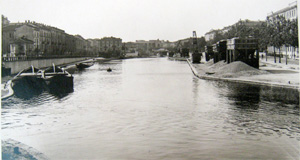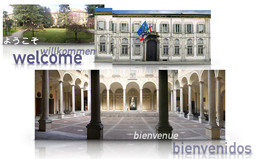150 years of history - Part 3
The First World War and the arrival at Palazzo Isimbardi
During the First World War, Milan's provincial administrative office terms were repeatedly renewed until 1920.
In 1916, the provincial council established the Labour Office, entrusted to study the working and hygienic conditions of workers in the area, follow phenomenon of internal and external labour emigration, monitor the application of economic and social-hygienic laws, study the unemployment phenomenon, promote employment and settle conflicts between capital and labour, creating arbitration committees where necessary.
 The economic crisis that followed the war culminated between 1919 and 1920 in an era of strikes against wage cuts and lock-outs.
The economic crisis that followed the war culminated between 1919 and 1920 in an era of strikes against wage cuts and lock-outs.
The new government, established after the famous “march on Rome”, the Province of Milan underwent radical reorganisation. The Council and Deputyship were abolished and, with them, the election criteria for provincial boards. The abolished boards were replaced by the Rectorship and Principal, nominated by the monarch. The Rectorship, the number of whose members, 4, 6 or 8, was based on the number of inhabitants in the province (eight for our Province), were assigned the tasks conducted by the abolished Council and the Principal those of the Deputyship and President of the Deputyship. The Principal thus held a primary role within the provincial administration.
The farming industry experienced periods of crisis and recovery during this era in our area. During the First World War, farming suffered the loss of labour but profits still remained at a discreet level. In those years, the sharecropping system gradually disappeared from the Upper Milan region, replaced throughout by land rental. As for industry, the war promoted the leadership of Milan’s industries in war supplies, especially the metalworking industries. The silk industry, a luxury industry unsuited for the circumstances, suffered. Some sectors found new opportunities such as the chemical industry, switching production from fertilizers to explosives. The electricity industry experienced high growth.
In 1935 the Province purchased Palazzo Isimbardi to be used as its headquarters. The Province of Milan and Prefecture previously shared the adjacent Palazzo Diotti, another historic provincial property. The ancient palazzo underwent significant renovations. See also The history of the Palace.
Read more
- Part 1 - The first steps towards the birth of the Province - The birth of the Province of Milan
- Part 2 - Development during the turn of the century industrial revolution
- Part 3 - The First World War and the arrival at Palazzo Isimbardi
- Part 4 - The rebirth of democracy
Data creazione: Tue Dec 15 10:52:20 CET 2015


